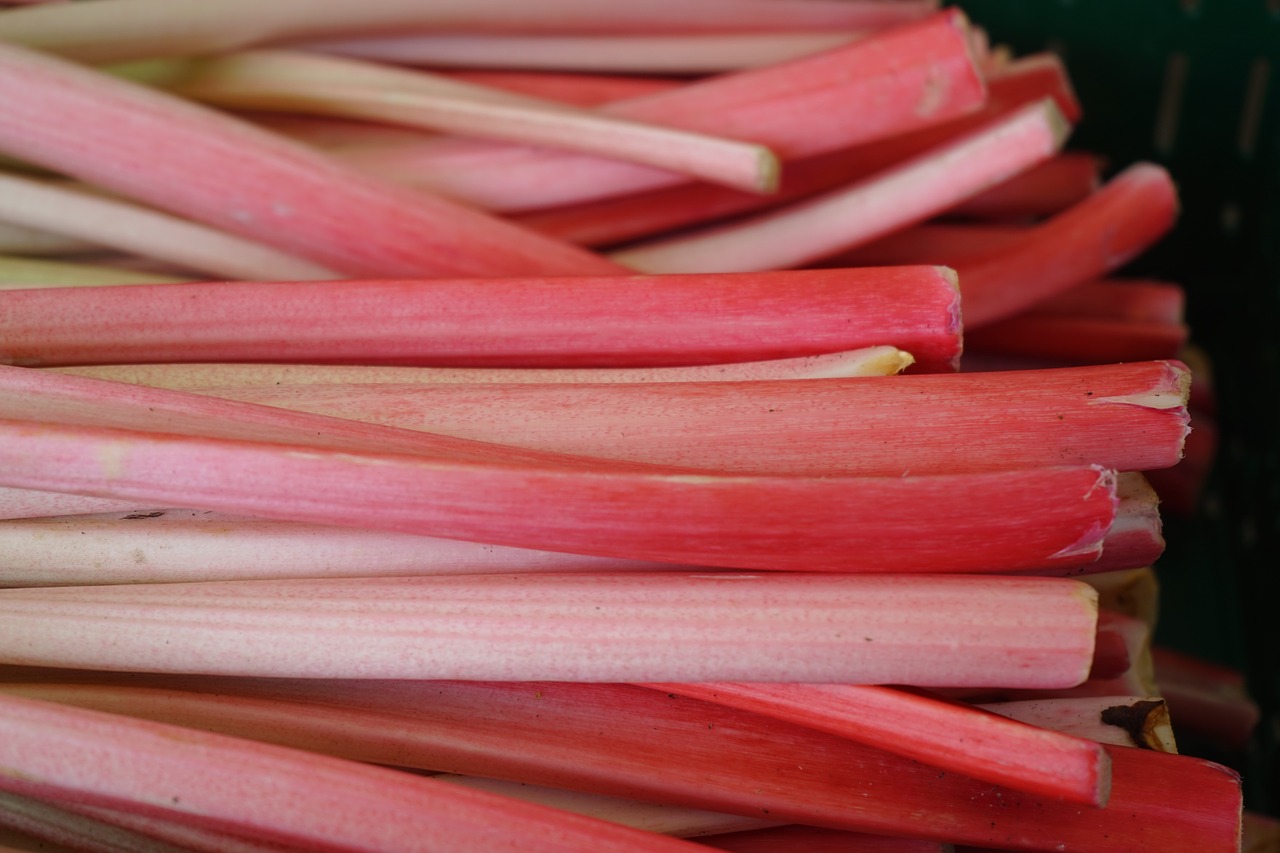It is rhubarb season! That’s why we have collected 25 interesting and maybe not so interesting facts about rhubarb for you here.
- Rhubarb means rheum rhabarbarum in Latin
- This means something like “foreign root“
- Rhubarb comes from the Himalayas
- It is part of the knotweed family
- Buckwheat and sorrel also come from this family
- Only the stems can be used
- Rhubarb is often considered a fruit because of its use, however it is actually a vegetable
- In the USA, rhubarb has been legally considered a fruit since 1947
- The leaves are toxic due to the oxalic acid they contain
- Oxalic acid promotes rheumatism, gout and the development of kidney stones
- Oxalic acid corrodes the enamel of the teeth, so it is recommended to wait at least half an hour after eating rhubarb before brushing your teeth
- The best red-fleshed rhubarb is called “Elmsfeuer” or “St. Elmo’s Fire”
- Rhubarb has a digestive (or laxative) effect
- It is therefore well suited for a detox or purification cleanse
- The flower buds of rhubarb can be used as vegetables and prepared like broccoli
- Per 100g rhubarb has only 13 kcal
- It contains vitamins A, B1, B2 and C
- Rhubarb has a sour taste due to its citric acid and malic acid
- 4800 years ago rhubarb was used as a medicinal plant, but only the roots, not the stems
- Only in the 18th century it was discovered as food
- In 1937 the area under cultivation in Germany was 1700 hectares, but by 1993 it dropped between 350 and 400 hectares
- Rhubarb grows up to 2 meters high
- May to June is when rhubarb flowers
- The climatic requirements are low, rhubarb just needs plenty of water
- Final harvest is the longest day of the year (June 21)
You can read more exciting facts about the carrot here.
Sources:
- Wikipedia – Rhubarb
- Gemüse.ch – Rhubarb
- Hauenstein Rafz – Rhubarb
- 5 am Tag – Rhubarb
- Sun Snack – Rhubarb
Picture from https://pixabay.com/











What do you think?